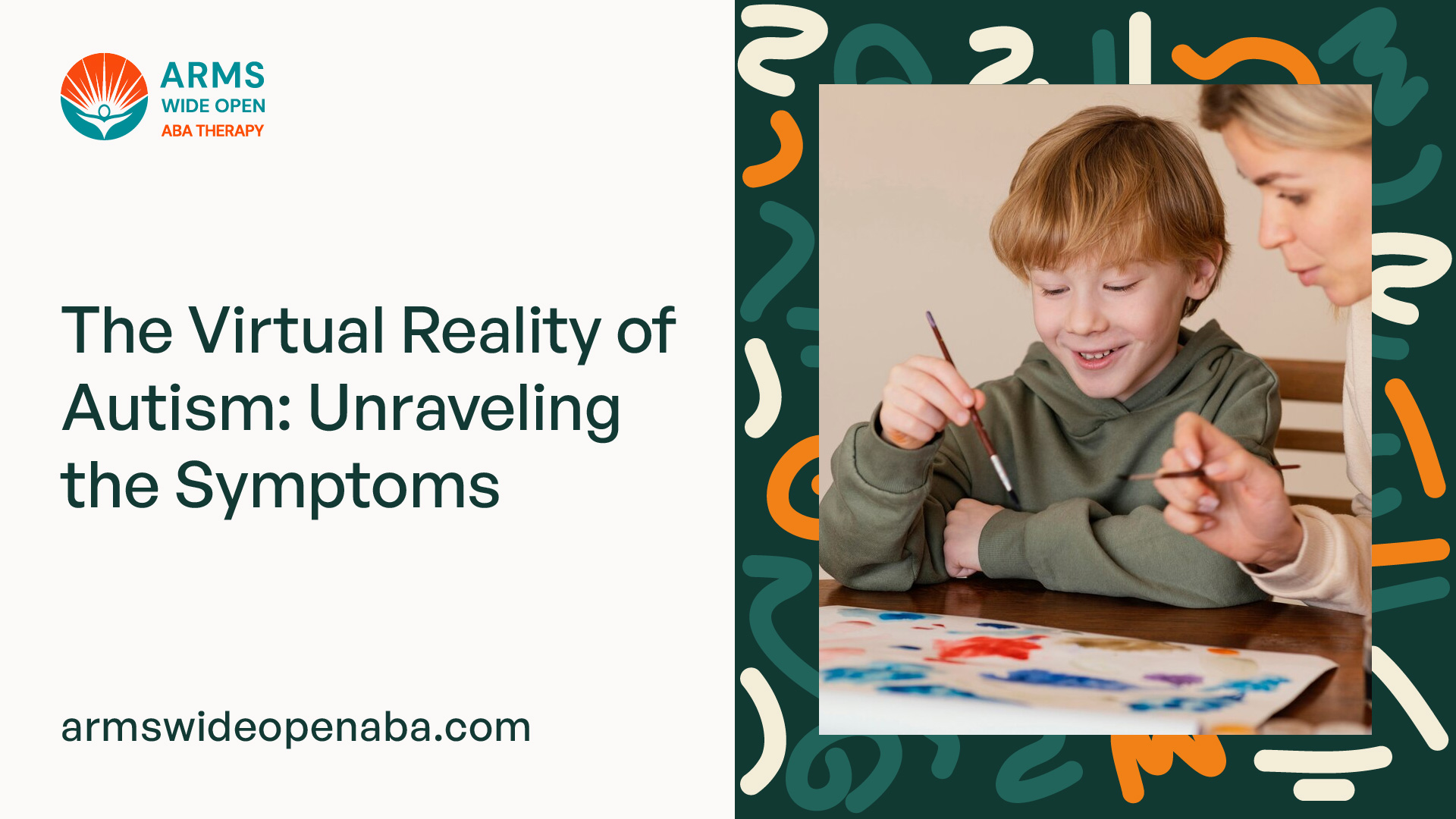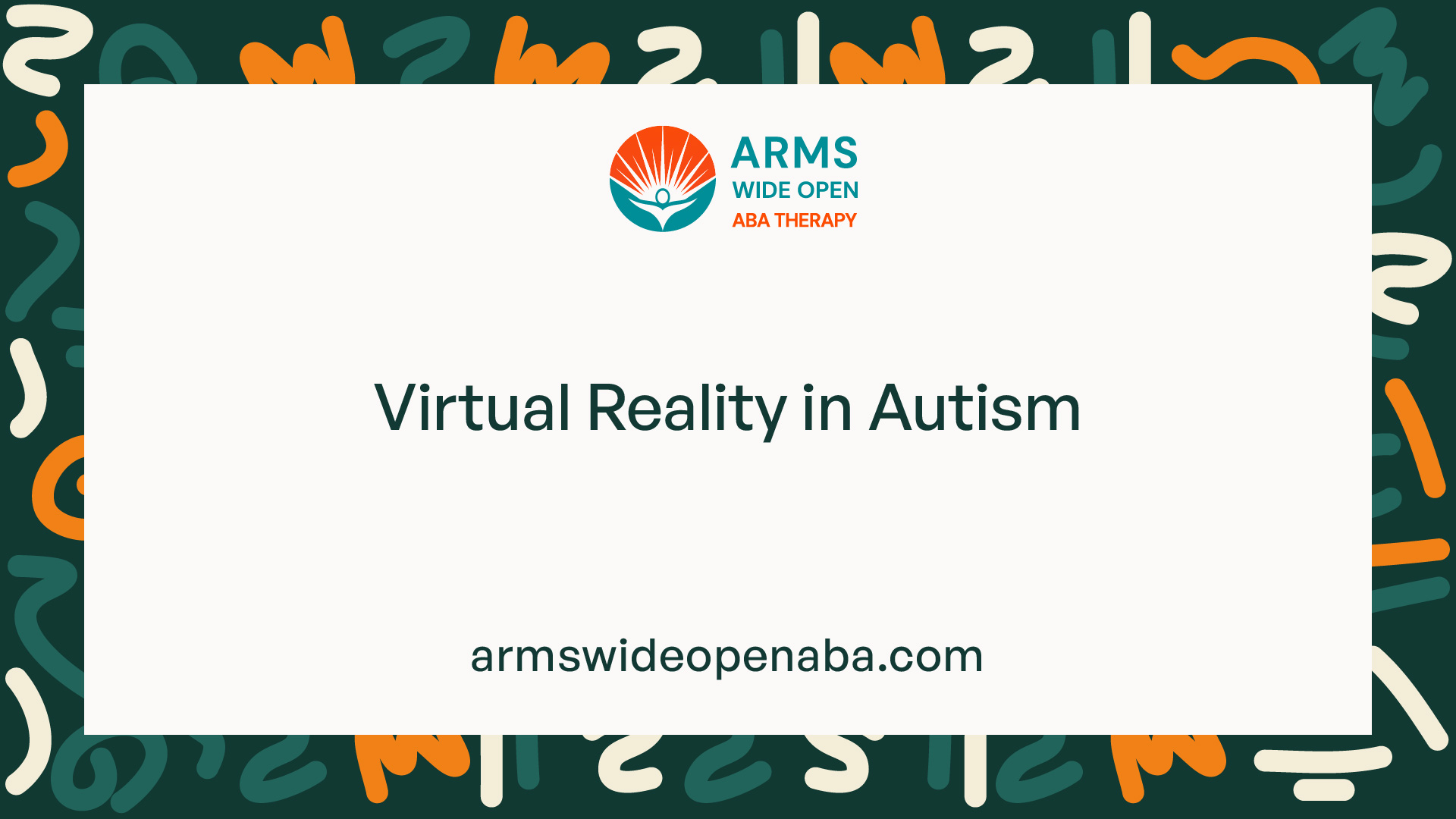The Virtual Reality of Autism: Unraveling the Symptoms
Unveiling the virtual reality of autism: discover the immersive journey into understanding symptoms and their implications


Understanding Autism
Autism is a complex neurodevelopmental disorder that affects individuals in various ways. To gain a deeper understanding of autism, it is important to explore both its definition and the prevalence and diagnosis of this condition.
What is Autism?
Autism, also known as Autism Spectrum Disorder (ASD), is a condition characterized by challenges in social interaction, communication difficulties, and the presence of repetitive behaviors. It is considered a spectrum disorder because the severity and manifestation of symptoms can vary greatly from person to person.
Individuals with autism may experience difficulties in socializing and forming relationships, understanding and using verbal and nonverbal communication, and exhibiting repetitive patterns of behavior or interests. These challenges can have a significant impact on daily functioning and interactions with others.
Prevalence and Diagnosis of Autism
Autism is a relatively common developmental disorder, with a notable increase in diagnosis rates over the past few decades. According to the Centers for Disease Control and Prevention (CDC), approximately 1 in 54 children are diagnosed with autism in the United States.
Diagnosing autism involves a comprehensive evaluation by healthcare professionals, including psychologists, psychiatrists, and developmental pediatricians. The diagnostic process typically involves assessing the individual's behavior, communication skills, and social interactions. Additionally, standardized criteria, such as the Diagnostic and Statistical Manual of Mental Disorders (DSM-5), are used to guide the diagnosis.
It is important to note that autism can be diagnosed at any age, although symptoms and their severity may change over time. Early diagnosis and intervention are crucial for providing appropriate support and improving the quality of life for individuals with autism.
Understanding the fundamentals of autism, including its core features and prevalence, sets the stage for exploring the role of virtual reality in unraveling the symptoms associated with this complex disorder. By leveraging virtual reality technology, researchers and healthcare professionals can gain valuable insights into the experiences and challenges faced by individuals with autism, ultimately leading to improved understanding, support, and intervention strategies.

Virtual Reality in Autism
Virtual reality (VR) has emerged as a promising tool in understanding and exploring the complexities of autism. By immersing individuals in realistic virtual environments, researchers and clinicians can gain valuable insights into the experiences of those with autism. This section will discuss the utilization of virtual reality for autism and the benefits it offers in unraveling the symptoms.
Utilizing Virtual Reality for Autism
Virtual reality technology allows researchers to create controlled and customizable environments that simulate real-life situations. By immersing individuals with autism in these virtual environments, researchers can observe and study their responses and behaviors in a controlled and safe setting.
Virtual reality can be used to recreate scenarios that individuals with autism may encounter in their daily lives, such as social interactions, communication challenges, and sensory sensitivities. Through these simulations, researchers can gain a deeper understanding of how individuals with autism perceive and respond to different stimuli, providing valuable insights into their experiences.
Benefits of Virtual Reality in Understanding Autism
The use of virtual reality in understanding autism brings several benefits. Firstly, it provides researchers with a unique opportunity to experience the world through the eyes of individuals with autism. By immersing themselves in virtual environments that replicate the sensory experiences and challenges faced by individuals with autism, researchers can develop a greater sense of empathy and understanding.
Virtual reality also allows for controlled experimentation and observation. Researchers can manipulate variables within the virtual environment to study specific aspects of autism, such as sensory sensitivities or social interactions. This level of control enables researchers to design studies that are not feasible or ethical in real-life settings.
Furthermore, virtual reality provides a safe and supportive space for individuals with autism to practice and develop skills. Through virtual simulations, individuals can engage in social interactions, communication exercises, and sensory integration activities. This training within a virtual environment can help individuals with autism build confidence and develop strategies for navigating real-world situations.
Overall, virtual reality offers a powerful tool for unraveling the symptoms of autism. By immersing individuals in realistic simulations, researchers can gain valuable insights into the experiences and challenges faced by individuals with autism. The utilization of virtual reality in autism research holds great potential for improving our understanding of autism and informing the development of innovative interventions and therapies.
Common Symptoms of Autism
Autism is a complex neurodevelopmental disorder that is characterized by a variety of symptoms. These symptoms can manifest differently in each individual with autism, but there are several common areas of challenge that people with autism may experience. These include communication challenges, social interaction difficulties, and repetitive behaviors and sensory sensitivities.
Communication Challenges
Communication challenges are a hallmark feature of autism. Individuals with autism may struggle with both verbal and nonverbal communication. They may have difficulties with expressive language, finding it challenging to express their thoughts and emotions. They may also have difficulties understanding and interpreting nonverbal cues, such as facial expressions and body language.
Communication Challenges
Expressive Language Difficulties
Difficulty Understanding Nonverbal Cues
Social Interaction Difficulties
People with autism often face challenges in social interactions. They may have difficulty initiating and maintaining conversations, understanding social norms, and interpreting social cues. Engaging in reciprocal conversations and building meaningful relationships can be particularly challenging for individuals with autism.
Social Interaction Difficulties
Difficulty Initiating and Maintaining Conversations
Challenges in Understanding Social Norms and Cues
Repetitive Behaviors and Sensory Sensitivities
Repetitive behaviors and sensory sensitivities are also commonly observed in individuals with autism. These behaviors can manifest in various forms, such as repetitive movements (e.g., hand flapping, rocking), adherence to strict routines or rituals, and intense interests in specific topics or objects. Sensory sensitivities can include hypersensitivity or hyposensitivity to sensory stimuli, such as light, sound, touch, taste, or smell.
Repetitive Behaviors and Sensory Sensitivities
Repetitive Movements and Routines
Intense Interests in Specific Topics or Objects
Sensory Sensitivities to Light, Sound, Touch, Taste, or Smell
Understanding these common symptoms of autism is crucial in providing support and interventions tailored to the needs of individuals with autism. Virtual reality simulations can play a valuable role in creating immersive experiences that help others gain a deeper understanding of these symptoms and the challenges faced by individuals with autism. By shedding light on these symptoms, we can work towards a more inclusive and empathetic society.

Virtual Simulation of Autism Symptoms
Virtual reality technology has opened up new possibilities for understanding and experiencing the symptoms of autism in a controlled and immersive environment. By simulating various aspects of autism, researchers and professionals can gain valuable insights into the challenges faced by individuals on the spectrum. In this section, we will explore three key areas in which virtual reality can provide a unique perspective on autism symptoms: visual and auditory sensitivities, social interaction scenarios, and communication challenges.
Visual and Auditory Sensitivities
Individuals with autism often experience heightened sensitivities to visual and auditory stimuli. Virtual reality simulations can recreate these sensory experiences, allowing researchers and professionals to better understand how individuals on the spectrum perceive the world around them.
Through virtual reality, visual and auditory stimuli can be adjusted to mimic the overwhelming nature of certain environments for individuals with autism. By immersing themselves in these simulations, researchers can gain a deeper understanding of the sensory sensitivities experienced by individuals on the spectrum. This knowledge can inform the development of strategies and interventions to help individuals manage and cope with sensory overload.
Social Interaction Scenarios
Social interactions can be challenging for individuals with autism due to difficulties in understanding non-verbal cues, maintaining eye contact, and interpreting social norms. Virtual reality simulations provide a safe and controlled environment to recreate social interaction scenarios, allowing researchers to examine the specific challenges faced by individuals on the spectrum.
By immersing themselves in these simulations, researchers can observe and analyze the social behaviors and responses of both individuals with autism and neurotypical individuals. This insight can contribute to the development of interventions and training programs aimed at improving social skills and enhancing communication abilities for individuals on the spectrum.
Communication Challenges
Communication difficulties are a common characteristic of autism. Virtual reality simulations can recreate scenarios that highlight the challenges faced by individuals with autism in expressive and receptive communication. These simulations can help researchers and professionals better understand the barriers to effective communication and explore potential interventions.
By immersing themselves in virtual reality environments, researchers can experience firsthand the communication challenges individuals with autism may encounter. This immersive perspective can inform the development of strategies and technologies aimed at improving communication skills, such as augmentative and alternative communication systems.
Virtual reality simulations of autism symptoms provide a unique and valuable tool for enhancing our understanding of the experiences of individuals on the spectrum. By exploring visual and auditory sensitivities, social interaction scenarios, and communication challenges through virtual reality, researchers and professionals can gain insights that contribute to the development of more effective interventions, training programs, and support for individuals with autism.
Implications and Applications
The use of virtual reality (VR) in understanding and simulating autism symptoms has significant implications and applications. This innovative technology has the potential to enhance empathy and understanding, provide training and therapeutic applications, and pave the way for future research in the field of autism.
Enhancing Empathy and Understanding
Virtual reality offers a unique opportunity to step into the shoes of individuals with autism and experience their world firsthand. By immersing neurotypical individuals in virtual simulations that replicate the sensory challenges, communication difficulties, and social interaction scenarios faced by individuals with autism, empathy and understanding can be fostered. This immersive experience can help promote acceptance, reduce stigma, and increase awareness about the complexities of autism.
Training and Therapeutic Applications
Virtual reality has proven to be a valuable tool for training and therapy in the context of autism. Professionals working with individuals on the autism spectrum can utilize virtual reality to practice and refine their skills in a safe and controlled environment. For example, therapists can simulate social situations and communication challenges to develop effective strategies and interventions.
Moreover, individuals with autism can benefit from virtual reality interventions that target specific areas of difficulty. Virtual environments can be designed to provide structured social interactions, facilitate communication skills, and help individuals manage sensory sensitivities. By repeatedly engaging with these virtual scenarios, individuals can build confidence, develop coping strategies, and improve their overall functioning.
Future Potential of Virtual Reality in Autism Research
The potential of virtual reality in autism research is vast. As technology continues to advance, researchers can explore new ways to utilize virtual reality to gain insights into the underlying mechanisms of autism. By conducting studies in virtual environments, researchers can observe and analyze the behavior, cognition, and neural responses of individuals with autism in a controlled and customizable setting.
Virtual reality also holds promise for the development of assessment tools that can accurately measure and quantify autism symptoms. By tracking and analyzing behavioral data obtained during virtual simulations, researchers can create objective measures to assess social interaction abilities, communication skills, and sensory sensitivities.
In addition, virtual reality can facilitate collaboration between researchers and clinicians by providing a standardized platform for data collection and sharing. This can lead to the establishment of large-scale databases that consolidate information from various studies, enabling researchers to explore patterns, trends, and potential subtypes of autism.
As virtual reality technology continues to evolve, the implications and applications in the field of autism are likely to expand. By leveraging the power of virtual reality, we can gain deeper insights, develop more effective interventions, and ultimately improve the lives of individuals on the autism spectrum.
Sources
https://www.abtaba.com/blog/virtual-autism-symptoms
https://www.adinaaba.com/post/what-is-virtual-autism
https://www.yellowbusaba.com/post/what-is-virtual-autism
Similar articles
We’re here to help you

Our team is here to assist you in this process. Contact us for any assistance.
it’s easy to apply
We Accept Most Insurances
Our in-network insurance partnerships make ABA therapy more accessible to families throughout our service areas.







Our Insurance Process
We'll request your insurance details to help us verify your plan's coverage for ABA therapy. Once we've received this information, we'll walk you through your benefits, including copayments, deductibles and out-of-pocket maximums, so you know what to expect in advance.
Our team will then handle the preauthorization and all the necessary paperwork.
.svg)





















.jpeg)


































.jpeg)




.jpeg)







.jpeg)











.jpeg)
















